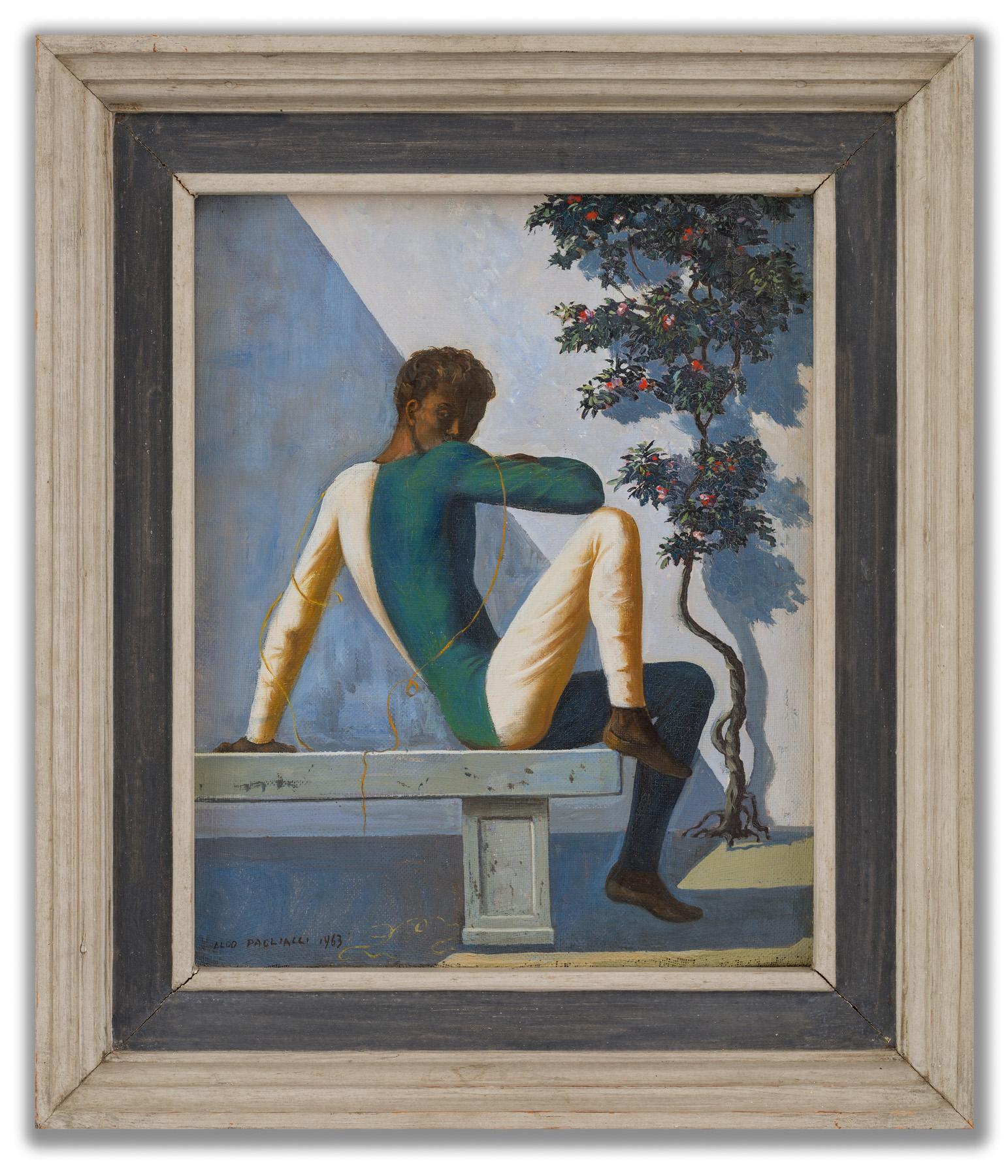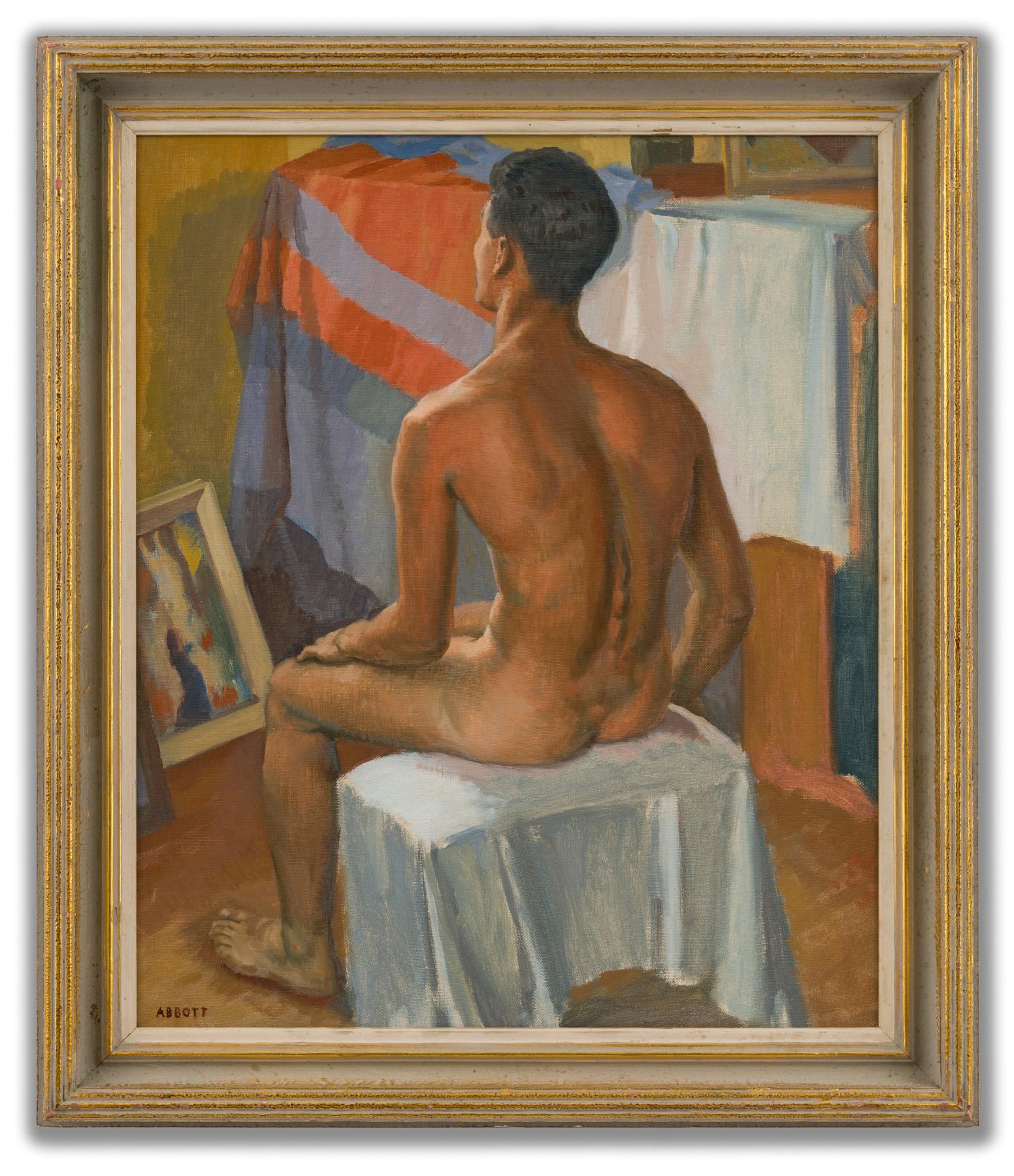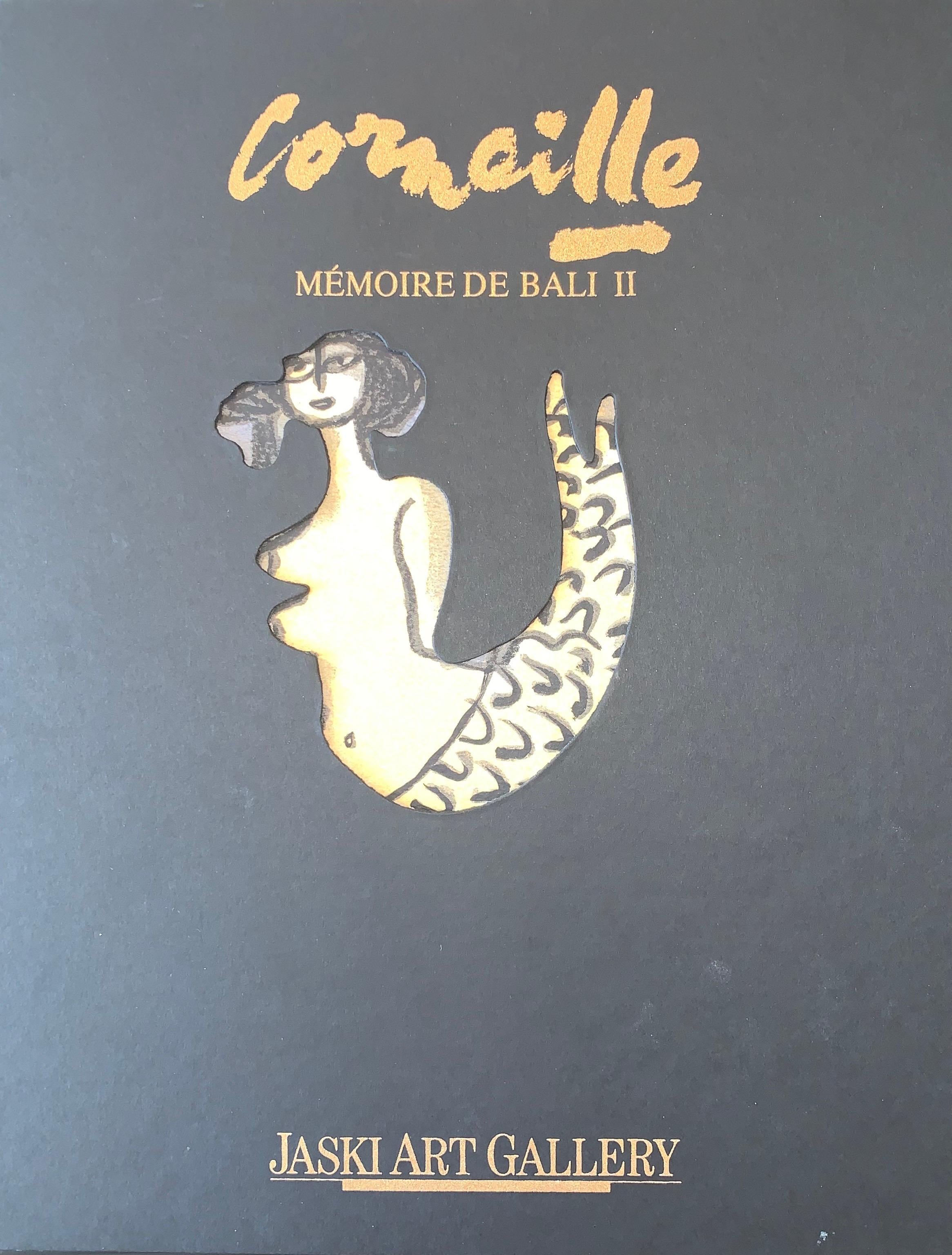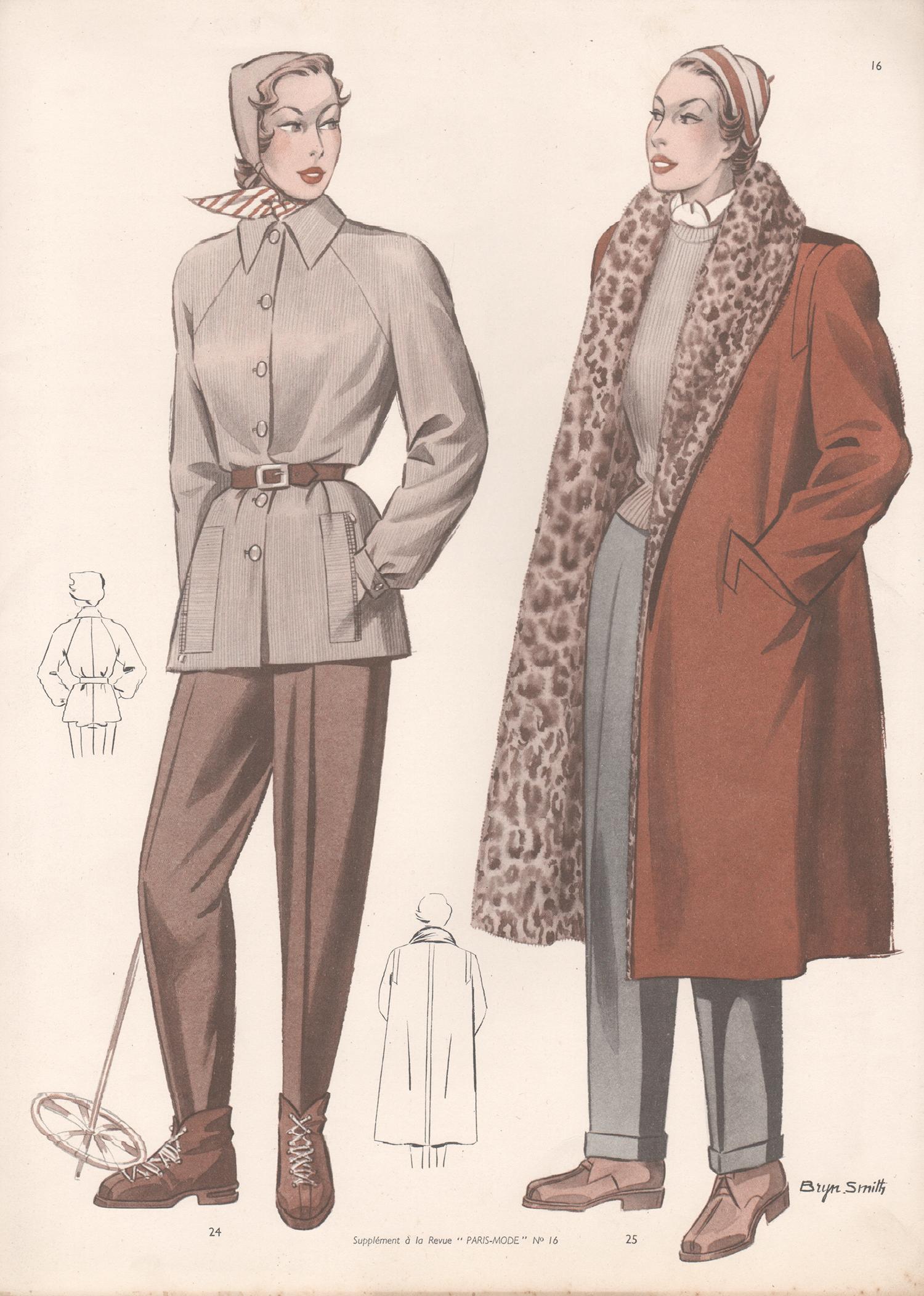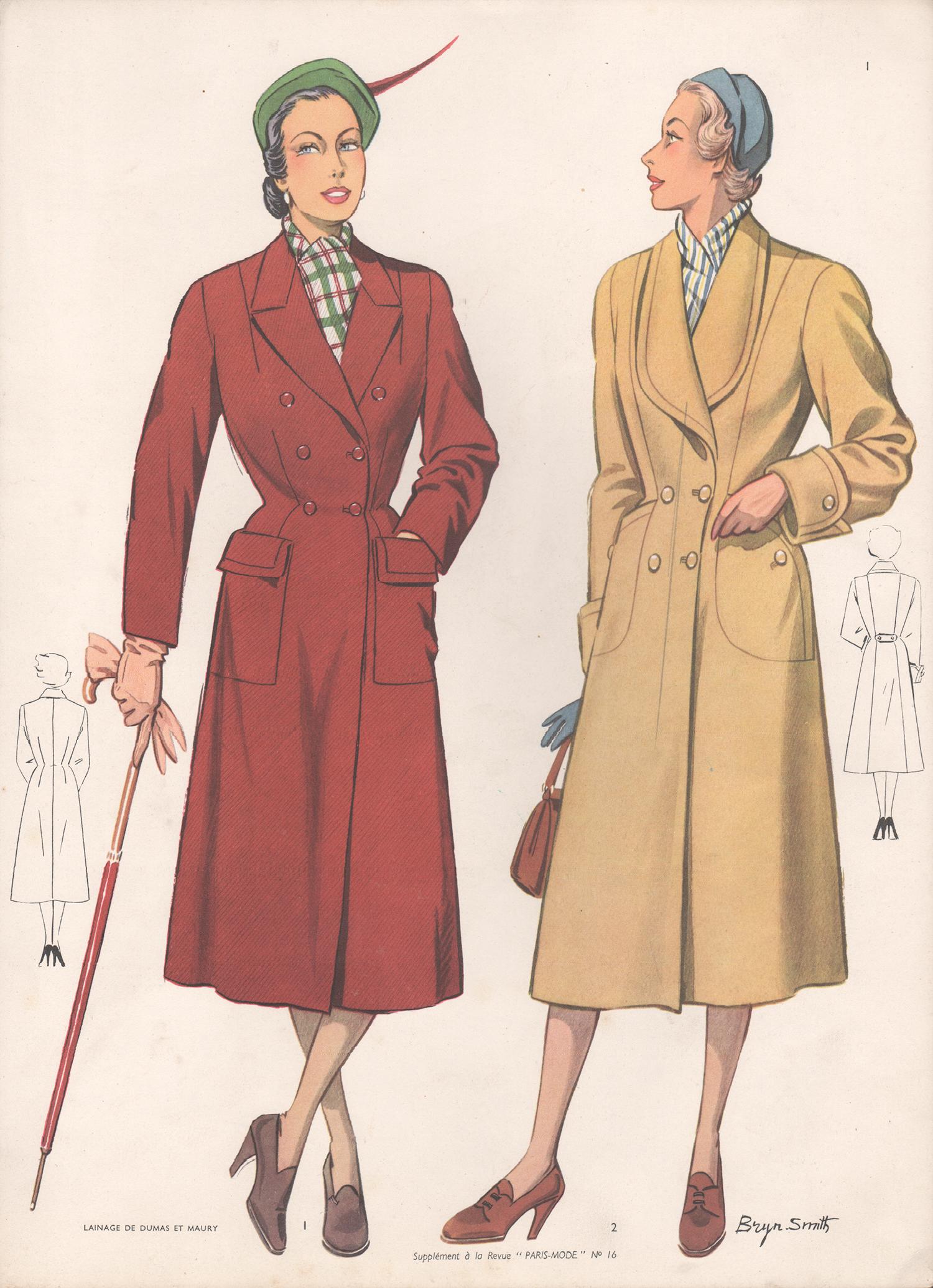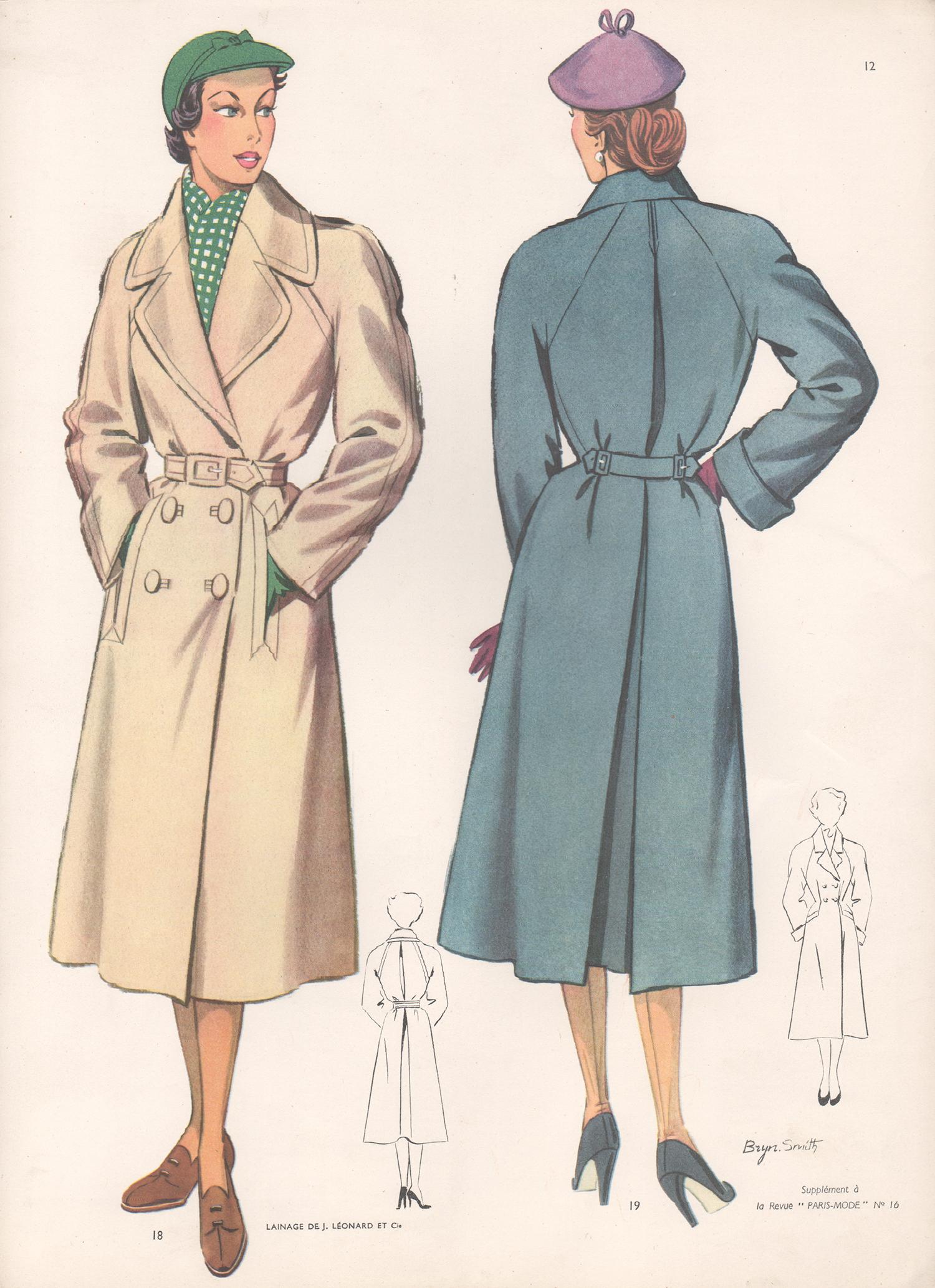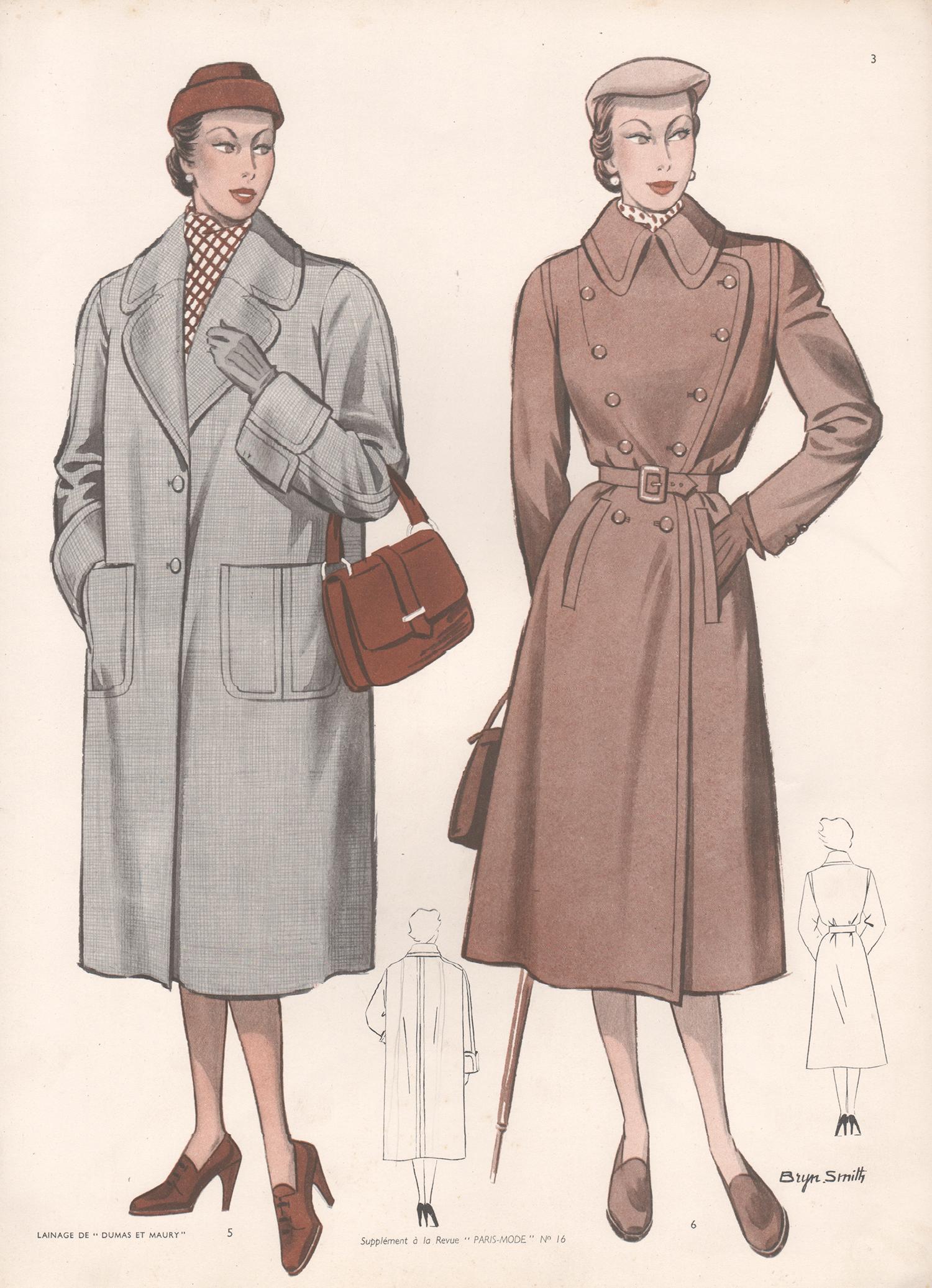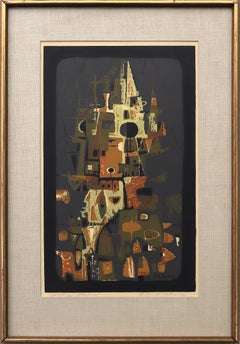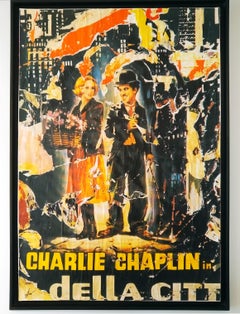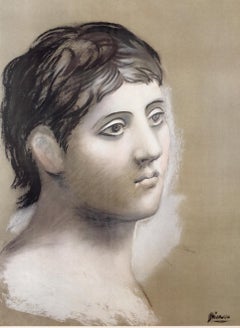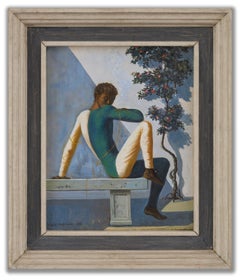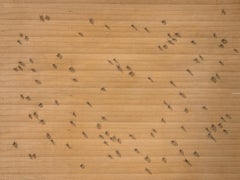
Cockroaches (Insect Portfolio)
View Similar Items
Want more images or videos?
Request additional images or videos from the seller
1 of 11
Ed RuschaCockroaches (Insect Portfolio)1972
1972
About the Item
- Creator:Ed Ruscha (1937, American)
- Creation Year:1972
- Dimensions:Height: 20 in (50.8 cm)Width: 27 in (68.58 cm)
- Medium:
- Movement & Style:
- Period:
- Condition:very good to excellent vintage condition.
- Gallery Location:Denver, CO
- Reference Number:Seller: DCG-224351stDibs: LU2735191972
About the Seller
5.0
Platinum Seller
These expertly vetted sellers are 1stDibs' most experienced sellers and are rated highest by our customers.
Established in 1979
1stDibs seller since 2013
264 sales on 1stDibs
Typical response time: 5 hours
More From This SellerView All
- Gothic Towers, 1950s Abstract Modern Silkscreen Print, Orange, Brown, GreenBy Edward ChavezLocated in Denver, COSerigraph on paper titled "Gothic Towers" by Edward (Eduardo) Arcenio Chavez (1917-1995) from circa 1955 of an abstract tower structure with orange, brown, greens and white. Presented framed, outer dimensions measure 25 ¼ x 17 ½ x 1 ½ inches. Image sight size 18 ½ x 11 ¼ inches. Print is clean and in very good vintage condition - please contact us for a detailed condition report. Expedited and international shipping is available - please contact us for a quote. About the Artist: Born in Wagonmound, New Mexico, Eduardo Chavez...Category
1950s Abstract Abstract Prints
MaterialsPaper, Screen
- Indian with Bow in Fox Costume, 1930s Modernist Print by Hilaire HilerBy Hilaire HilerLocated in Denver, CO'Indian with Bow in Fox Costume' is a vintage 1934 WPA era modernist color serigraph/silkscreen print by New Mexico artist, Hilaire Hiler (1898-1966) depicting a Native American figure with stylized feather headdress and Bow in black and red with white. Pencil signed by the artist in the lower right margin. Presented in a custom frame with all archival materials and UV protectant glass, outer dimensions measure 17 ½ x 15 x 1 ½ inches. Image size is 10 x 7 inches (sight). Expedited and International shipping is available - please contact us for a quote. About the Artist: Hilaire Hiler was born in St. Paul, Minnesota, and was raised in Providence, Rhode Island. Hiler took art classes as a child at the Rhode Island School of Design. When he was older, Hiler studied at the Pennsylvania Academy of the Fine Arts, the Pennsylvania School of Industrial Art, Wharton School of Finance and Commerce, and William Server's studio. He also studied at the University of Pennsylvania, the University of Denver, Golden State University, and National College in Ontario, Canada. He continued on to France, studying at the University of Paris in 1919. Hiler lived in Paris from 1919-1934, supporting himself as a jazz musician and a piano player for The Jockey Club. Hiler moved back to America in 1934, settling in San Francisco. He was commissioned by the Works Progress Administration (WPA) to paint murals in the Aquatic Park...Category
1930s American Modern Abstract Prints
MaterialsScreen
- Corralled Horse (Artists Proof), 1940s Framed American Modernist Horse EtchingBy Ethel MagafanLocated in Denver, CO"Corralled Horse", is an etching on paper by western artist Ethel Magafan (1916-1993) of a single dark horse standing outside in a wooden fenced corral. Presented in a custom frame, outer dimensions measure 19 x 23 inches. Image size is 10 x 14 inches. This is marked as an Artist Proof Piece is in very good condition - please contact us for a detailed condition report. Provenance: Estate of Artist, Ethel Magafan Expedited and international shipping is available - please contact us for a quote. About the Artist: Ethel Magafan Born 1916 Died 1993 The daughter of a Greek immigrant father and a Polish immigrant mother who met and married in Chicago, Ethel Magafan, her identical twin sister Jenne and their elder sister Sophie grew up in Colorado to which their father relocated the family in 1919. They initially lived in Colorado Springs where he worked as a waiter at the Antlers Hotel before moving to Denver in 1930 to be head waiter at the Albany Hotel. Two years later during the Great Depression Ethel and Jenne experienced at sixteen the tragic loss of their father who had encouraged their artistic aspirations. He was proud when Ethel, a student at Morey Junior High School, won top prizes in student poster contests sponsored by the Denver Chamber of Commerce and the Denver Post. At East High School in Denver she and Jenne contributed their art talents to the school’s and by their senior year were co-art editors of the Angelus, the 1933 yearbook. At East they studied art with Helen Perry, herself a student of André Lhote in Paris and the Art Institute of Chicago. Her decision to abandon an arts career to teach high school students served as an important example to Ethel and Jenne, who early on had decided to become artists. In a city-wide Denver competition for high school art students Ethel won an eighteenweek art course in 1932-33 to study at the Kirkland School of Art which artist Vance Kirkland had recently established in the Mile High City. Perry encouraged the Magafan twins’ talent, exposing them to the work of Matisse, Picasso and Cézanne and introducing them to local artists and architects like Frank Mechau and Jacques Benedict whom she invited to speak in her high school art classes. She paid the modest tuition for Ethel and Jenne to study composition, color, mural designing and painting at Mechau’s School of Art in downtown Denver in 1933-34. In the summer of 1934 and for a time in 1936 they apprenticed with him at his studio in Redstone, Colorado. When they returned to Denver in 1934 with no family breadwinner to support them, their mother insisted that they have real jobs so they worked as fashion artists in a Denver department store. When Jenne won the Carter Memorial Art Scholarship ($90.00) two years later, she shared it with Ethel so that both of them could enroll in the Broadmoor Art Academy (now the Colorado Springs Fine Arts Center) where they studied with Mechau. When the scholarship money ran out after two months, he hired them as his assistants. Along with Edward (Eduardo) Chavez and Polly Duncan, they helped him with his federal government mural commissions. At the Fine Arts Center Ethel also studied with Boardman Robinson and Peppino Mangravite, who hired her and Jenne in 1939 to assist him in his New York studio with two murals commissioned for the post office in Atlantic City, New Jersey. Like their Denver high school art teacher, Robinson also stressed the need to draw from nature in order to "feel" the mountains, which later become the dominant subject matter of Ethel’s mature work after World War II. Mechau trained her and her sister in the complex process of mural painting while they studied at the Colorado Springs Fine Arts Center, teaching them the compositional techniques of the European Renaissance masters. This also involved library research for historical accuracy, small scale drawing, and Page 2 of 4 the hand-making of paints and other supplies. Ethel recalled that their teacher "was a lovely man but he was a hard worker. He drove us. There was no fooling around." Her apprenticeship with Mechau prepared her to win four national government competitions, beginning at age twenty-two, for large murals in U.S. post offices: Threshing – Auburn, Nebraska (1938), Cotton Pickers – Wynne, Arkansas (1940), Prairie Fire – Madill, Oklahoma (1940), and The Horse Corral – South Denver, Colorado (1942). In preparation for their commissions Ethel and her sister made trips around the country to pending mural locations, driving their beat-up station wagon, dressed in jeans and cowboy boots with art supplies and dogs in tow. She and Jenne combined their talents in the mural, Mountains in Snow, for the Department of Health and Human Services Building in Washington, DC (1942). A year later Ethel executed her own mural, Andrew Jackson at the Battle of New Orleans, January 8, 1814, for the Recorder of Deeds Building, also in Washington, DC. Her first mural commission, Indian Dance, done in 1937 under the Treasury Department Art Project for the Senate Chamber in the United States Capitol, has since disappeared. Ethel and her sister lived and worked in Colorado Springs until 1941 when their residence became determined by the wartime military postings of Jenne’s husband, Edward Chavez. They moved briefly to Los Angeles (1941-42) and then to Cheyenne, Wyoming, while he was stationed at Fort Warren, and then back to Los Angeles for two years in 1943. While in California, Ethel and Jenne executed a floral mural for the Sun Room of the Beverly Hills Hotel and also painted scenes of the ocean which they exhibited at the Raymond and Raymond Galleries in Beverly Hills. While in Los Angeles they met novelist Irving Stone, author of Lust for Life, who told them about Woodstock, as did artists Arnold Blanch and Doris Lee (both of whom previously taught at the Colorado Springs Fine Arts Center school. In summer of 1945 Ethel, her sister and brother-in-law drove their station wagon across the country to Woodstock which became their permanent home. A year later Ethel married artist and musician, Bruce Currie, whom she met in Woodstock. In 1948 with the help of the GI Bill they purchased an old barn there that also housed their individual studios located at opposite ends of the house. The spatial arrangement mirrors the advice she gave her daughter, Jenne, also an artist: "Make sure you end up with a man who respects your work…The worst thing for an artist is to be in competition with her husband." In 1951 Ethel won a Fulbright Scholarship to Greece where she and her husband spent 1951-52. In addition to extensively traveling, sketching and painting the local landscape, she reconnected with her late father’s family in the area of Messinia on the Peloponnese peninsula in southern Greece. At the same time, her sister Jenne accompanied Chavez on his Fulbright Scholarship to Italy where they spent a productive year painting and visiting museums. Shortly after returning home, Jenne’s career was cut tragically short when she died of a cerebral hemorrhage at age thirty-six. It deeply affected Ethel whose own work took on a somber quality for several years conveyed by a darkish palette, as seen in her tempera painting, Aftermath (circa 1952). In the 1940s Ethel and her sister successfully made the important transition from government patronage to careers as independent artists. Ethel became distinguished for her modernist landscapes. Even though Ethel became a permanent Woodstock resident after World War II, from her childhood in Colorado she retained her love of the Rocky Mountains, her "earliest source of my lifelong passion for mountain landscape." She and her husband began returning to Colorado for annual summer camping trips on which they later were joined by their daughter, Jenne. Ethel did many sketches and drawings of places she found which had special meaning for her. They enabled her to recall their vital qualities which she later painted in her Woodstock studio, conveying her feeling about places remembered. She also produced a number of watercolors and prints of the Colorado landscape that constituted a departure from the American Scene style of her earlier paintings. Her postwar creative output collectively belongs to the category of landscape abstractionists as described by author Sheldon Cheney, although to a greater or lesser degree her work references Colorado’s mountainous terrain. She introduced a palette of stronger pastels in her paintings such as two temperas, Evening Mountains from the 1950s and Springtime in the Mountains from the early 1960s. In 1968 she was elected an Academician by the National Academy of Design in New York. Two years later, based on results of her many summer trips to Colorado, the U.S. Department of the Interior invited her to make on-the-spot sketches of the western United States, helping to document the water resources development and conservation efforts by the Department of the Interior. Her sketches were exhibited at the National Gallery in Washington, DC, and then sent on a national tour by the Smithsonian Institution. Similarly, her previous work as a muralist earned her a final commission at age sixty-three for a 12 by 20 foot Civil War image, Grant in the Wilderness, installed in 1979 in the Chancellorsville Visitors Center at the Fredericksburg National Military Park in Virginia. In the 1970s, too, she taught as Artist-in-Residence at Syracuse University and at the University of Georgia in Athens. Her many awards include, among others, the Stacey Scholarship (1947); Tiffany Fellowship (1949); Fulbright Grant (1951-52, in Greece with her husband); Tiffany Fellowship (1949); Benjamin Altman Landscape Prize, National Academy of Design (1955); Medal of Honor, Audubon, Artists (1962); Henry Ward Granger Fund Purchase Award, National Academy of Design (1964); Childe Hassam Fund Purchase Award, American Academy of Arts and Letters (1970); Silver Medal, Audubon Artists (1983); Champion International Corporation Award, Silvermine Guild, New Canaan, Connecticut (1984); John Taylor Award, Woodstock Artists Association, Woodstock, New York (1985); Harrison Cady...Category
1940s American Modern Figurative Prints
MaterialsEtching, Paper
- 1960s Abstract American Modernist Pencil Signed Colored Lithograph PrintLocated in Denver, CO1966 American Modernist abstract color lithograph by Lewis Lee Tilley (1921-2005). The print is singed and editioned/numbered 4 of 5 prints by the artist. Presented in a custom frame, outer dimensions measure 29 x 23 inches. Image size is 12 ½ x 10 ½ inches. Piece is clean and in very good condition - please contact us for a detailed condition report. Provenance: Fremont Center for the Arts, Canon City...Category
1960s Abstract Abstract Prints
MaterialsPaper, Lithograph
- Tourists, Garden of the Gods, Colorado Springs, Colorado, 1930s Lithograph PrintBy Charles LockeLocated in Denver, COPhoto Opportunity (Tourists, Garden of the Gods, Colorado Springs, Colorado; edition of 30 is a lithograph circa 1935 by Charles Wheeler Locke (1899-19...Category
1930s American Modern Figurative Prints
MaterialsPaper, Lithograph
- Gem Mining Company, Colorado Landscape Mining Scene 1930s Lithograph PrintBy Arnold RönnebeckLocated in Denver, CO'Gem Mining Company', lithograph by Arnold Ronnebeck from 1932. Colorado mining scene with several mining buildings amongst the mountains. Presented in...Category
1930s American Modern Landscape Prints
MaterialsLithograph
You May Also Like
- Mimmo Rotella The Lights of the City Slashed Silk-screen Print on CanvasBy Mimmo RotellaLocated in Paris, FRMimmo Rotella, Le Luci della citta 2005 Slashed silk-screen print on canvas Edition of 60 Signed and numbered on the lower left 124 x 86 cm Mimmo Rotella is an Italian artist and poet known for his collages made from torn advertising posters, which he calls "double décollages". Born October 7, 1918 in Catanzaro, Italy, he studied at the Accademia di Belle Arti in Naples before settling in Rome in 1945 and getting closer to Lettrism. Alongside Raymond Hains...Category
Early 2000s Post-War Figurative Prints
MaterialsScreen, Canvas, Silk
- Tête de Jeune HommeBy (after) Pablo PicassoLocated in Knowle Lane, CranleighOffset Lithograph, Limited Edition from an edition of 175. Signed in pencil, lower right and framed in a handmade gold leaf frame. Based on an original Pastel drawn in Fontainebleau, during the summer of 1921. This neoclassical head...Category
1920s Post-War Portrait Prints
MaterialsLithograph
$12,069 - HarlequinBy Aldo PagliacciLocated in London, GBOil on canvas, signed and dated (lower left), 30cm x 24cm (41cm x 34cm framed). A prodigious talent from an early age, Pagliacci took part in the Venice Biennale in 1929 or 1930 at...Category
1960s Post-War Nude Paintings
MaterialsCanvas, Oil
- Model in the StudioLocated in London, GBOil on canvas, signed (lower left), 59cm x 49cm (72cm x 62cm framed). An Australian artist, who studied at the Royal Academy in London in the 1930s, Abbott became highly accomplish...Category
1950s Post-War Nude Paintings
MaterialsCanvas, Oil
- Les Mémoires de Bali II - Cobra, 20th century, 31/200, Portfolio 3 screen printBy Guillaume Cornelis van Beverloo (Corneille)Located in Sint-Truiden, BEGuillaume Corneille screen prints 3 pieces + poem of Bert Schierbeek in portfolio Corneille was one of the founders and one of the most important representatives of the Cobra movemen...Category
Late 20th Century Post-War Figurative Prints
MaterialsLithograph
- French Mid-Century Winter 1949 Fashion Design Skiing Skiers Lithograph PrintBy Jean DarrouxLocated in Melbourne, VictoriaFrench skiing fashion design published as a Supplement to 'L'Homme', a Parisien fashion periodical. Jean Darroux was a Parisien tailor, who designed several series of designs, probab...Category
Mid-20th Century Post-War Figurative Prints
MaterialsLithograph
Recently Viewed
View AllMore Ways To Browse
Leningrad Landscape Artists
Leone Venezia
St Mary Of Egypt
Intaglio Ship
Red Rocket
Cat Florence
1886 Russia
1886 Russian
Art For Passover
Russian Landscape Early 19th Century
Neoclassical 1750s
Terrell Thornhill
Large Abstract Painting Impressionist Cubism
Broken Plate Wall Art
Political Humor Mural Painting
Dress Under 200
Wwi Paris
Summer Sunrise


